During the Armory Show, CAFA ART INFO conducted interviews with three gallery directors from different sections to learn about their targeted market sections, strategic concerns when selecting artists, and predictions on market trends based on the current state of the art communities in New York.
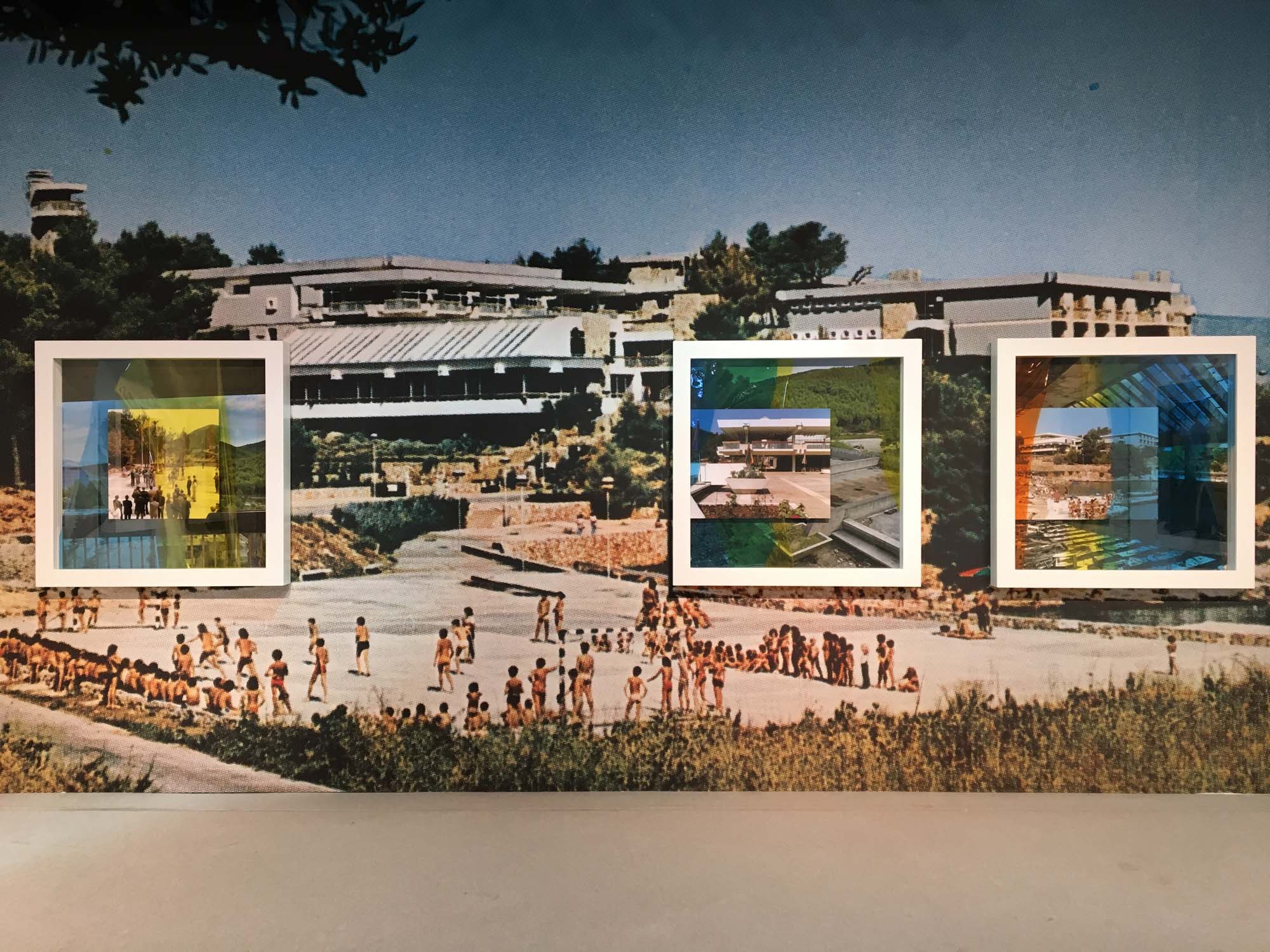
Installation view of Viktor Popović’s Untitled
(Archive Zenčišće), C24 Gallery, New York
Theme as the priority: Galleries making debuts in the Armory Show form a collective image in Focus
Terry was previously a visiting faculty member at Bard College, Berlin. Prior to Bard, Terry was the Director and Curator of Grants and Exhibitions at the New York Foundation for the Arts.Here is an interview with David C. Terry, the Director of C24 Gallery in New York.
CAFA ART INFO: What drove you to apply for the Armory Show? What was the challenge during your application?
David C. Terry: So the reason we applied for me is because it's a really magnificent platform to showcase our artists’ work. It's an honor to be included in this Focus section, the more curated sections. Here we share the space with are really wonderful, fascinating, interesting galleries and artists.
So the challenge was to really look at the description of the different curated sections and to see if any of our artists created work that kind of celebrated what the theme was. Coincidentally, I had been working with Viktor Popović who was doing a residency in Berlin. So when this application came around, he was in my head. And it turned out that his work was a good match with Focus.
CAFA ART INFO: As we know, this year's Focus is about the alternate versions of self and revisionist histories.Why do you think the artist you select respond to the theme?
David C. Terry: Viktor does a lot of work about spaces in memory and potential displacement. After I described the theme to him, he immediately had this project in mind. He visited the sites of those late Modern Croatian architectures from the 1970s and photographed today's devastated grounds. And it just kind of worked out. It aligned perfectly.
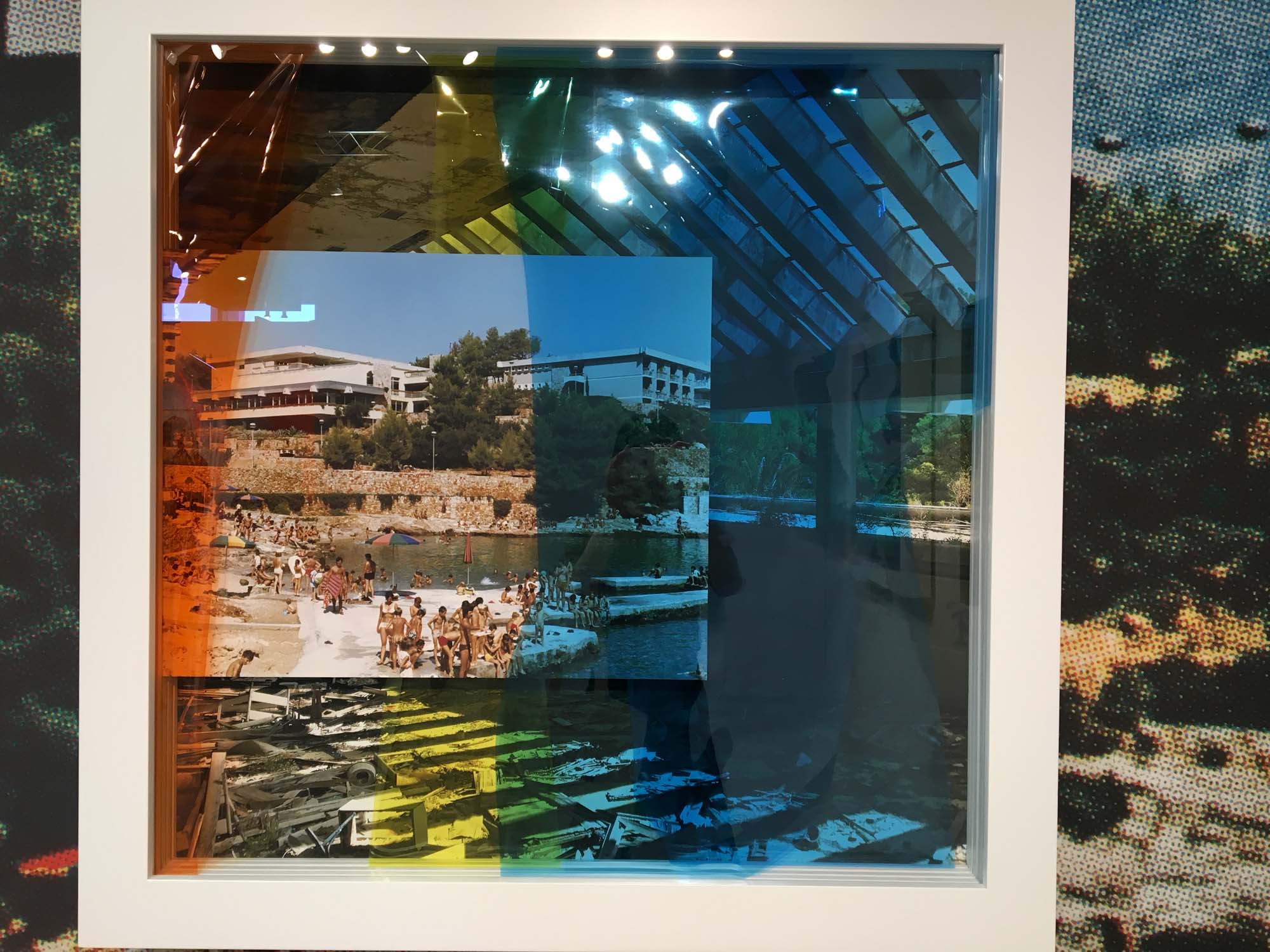
Detail of Viktor Popović’s Untitled (Archive Zenčišće) , C24 Gallery, New York
CAFA ART INFO: Do you participate in other kinds of art fairs? How does the Armory Show distinguish itself from others?
David C. Terry: There are quite a few differences in location. So we've participated in the Seattle Art Fair, Art Miami, and Contemporary Istanbul. All those locations are kind of all over the world. And there's a just a kind of a different vibe, in this case, it is the curatorial vibe. You have maybe 30 galleries that are all working around a theme. So it feels like a little bit more of a collective idea, whereas the other ones are more individual. And also when you go to other art fairs, you might see galleries show five or six artists in one room. In this case, there's only one or two artists. So you get to see a more consistent vision. So it's an interesting take.
CAFA ART INFO: How do you see the trend of the following decade in the art market? How will you adapt the business model towards that trend?
David C. Terry: I guess technology will have a huge role in some way in the following decade. Ten years ago there was already a strong interest in technology, but technology was utilized differently at that time. Maybe there will be more augmented reality work, digital work, even implanted work. Who knows? It's hard to say how the business model would change accordingly, because I don't know what it will look like. In my opinion, if they're strong work and strong vision that should drive. I think it will always be like that.

Installation view of Shi Guowei’s photography and Wang Keping’s sculpture, 10 Chancery Lane Gallery, HK
Rules of the high-end market:
Galleries as the most serious section of the fair
Katie de Tilly arrived in Hong Kong in 1994, and founded 10 Chancery Lane Gallery in 2001. She sits on the board of the Tate APAC committee, Program Advisory Committee of RMIT University and is Co-President of the Hong Kong Art Gallery Association. Katie de Tilly, the director of 10 Chancery Lane Gallery in Hong Kong, shared the reason why she only showed Chinese artists accepted by western institutions.
CAFA ART INFO: As we all know that the Art Basel Hong Kong was called off, how do you expect the art fair here in New York can help the gallery to cope with the lost profit in art business back in Asia?
Katie de Tilly: Right now, the whole world is under certain questioning about the Covid-19. So there is definitely never before in the history so much media attention towards it. Whether that information is true or not, the time will tell. However, we're very happy to be here in New York. We are having great response to Chinese artists that we are showing: Shi Guorui and Wang Keping. And the collectors are very open and happy to hear about their work. So we don't feel that it is too much affected by the cancellation of the Art Basel Hong Kong or the coronavirus outbreak back in Asia. We think the reception of the show is quite positive. Nobody judges the work because they are Chinese in any different way than its beautiful artwork.
CAFA ART INFO: How is the atmosphere of Hong Kong art scene right now?
Katie de Tilly: In Hong Kong itself, we are working together with the whole art community to start a collaborative campaign from the middle of March until the end of May, which is called Art Power HK. It's initiated by a group of people working in the field. I'm one of them. We will make many artistic events and exhibitions affected by the coronavirus outbreak continue to happen online. We feel that 2020 is an important time for Hong Kong artists and there is a community-wide desire to maintain momentum for the arts in Hong Kong. This is something that never happened before. So even sometimes I think it's overreaction, but we cannot say yet.
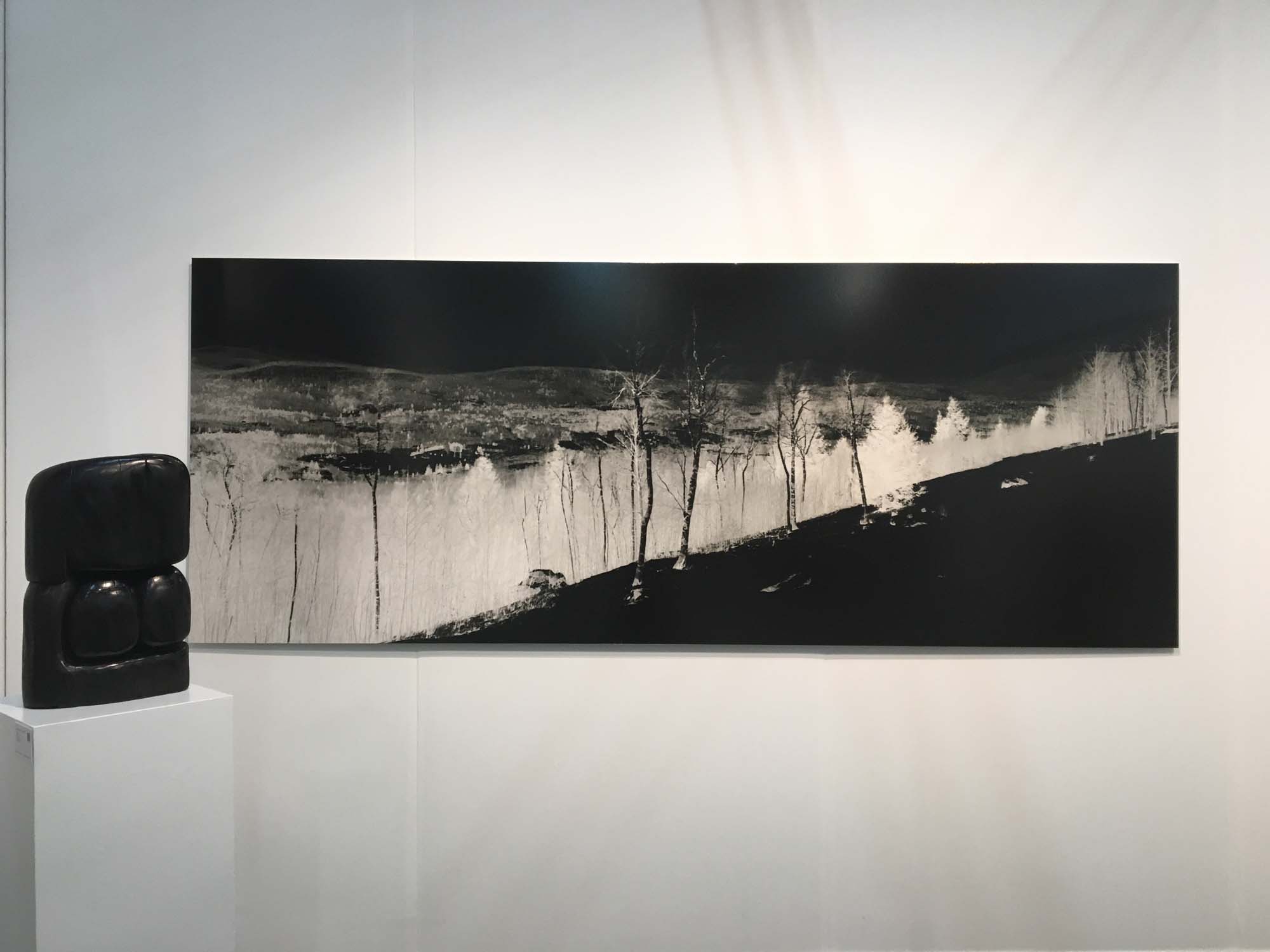
Installation view of Shi Guowei’s photography and Wang Keping’s sculpture, 10 Chancery Lane Gallery, HK
CAFA ART INFO: Why do you choose these two Chinese artists for the Armory Show?
Katie de Tilly: Both of these artists, Shi Guorui and Wang Keping are internationally recognized and important artists. Shi Guorui has shown his work in the Metropolitan Museum of Art here in New York. He had his first museum solo show in 2006 in San Francisco. He will also have an opening at the Museum of Photographic Art in San Diego tomorrow. So he has a real strong international presence and collection.
Wang Keping who is based in Paris is 71 years old. He's one of the founders of “The Stars” (Xing Xing), China’s first avant garde art group following the Cultural Revolution. He is also one of the first artists to come out of China after Xingxing Exhibition in 1979. As a wonderful sculptor, as well as a senior artist, he is very loved in Europe, in Asia, and in the US.
It's not necessarily because they're Chinese or not Chinese. We choose to show these two artists because both of them are doing work that is very deep, and they have a very global audience.
CAFA ART INFO: Except for the Armory Show, what other art fairs do you usually participate in each year? In your understanding, how does the Armory Show distinguish itself from others? What's your concern when dealing with collectors from New York?
Katie de Tilly: We usually have six art fairs each year. It kind of changes every year. Besides, we've done Art Basel Miami, Art Basel Hong Kong, Art Brussels, Art Paris, Frieze Masters, and KIAF Art Seoul. So each decision is made for the specific fair, like the history of the art fair, and the specific trend of the year. This project that Shi Guorui has done is about the Hudson Valley in New York. All these photographs were shot around Catskill mountain. So it is very relevant to the location.
And I would also say New York is the most serious art collecting capital of the world. People really love art, and they're very serious about their collecting, their research, and their knowledge of acquired works. So in terms of selecting artists for the Armory Show, it is better to be institutionalized artists. So we've done armory now for four years. The first time participating in the Armory Show, we showed a younger artist, and it was in the curatorial section (the Focus) . However, since we moved to the major section, we started to show established artists.
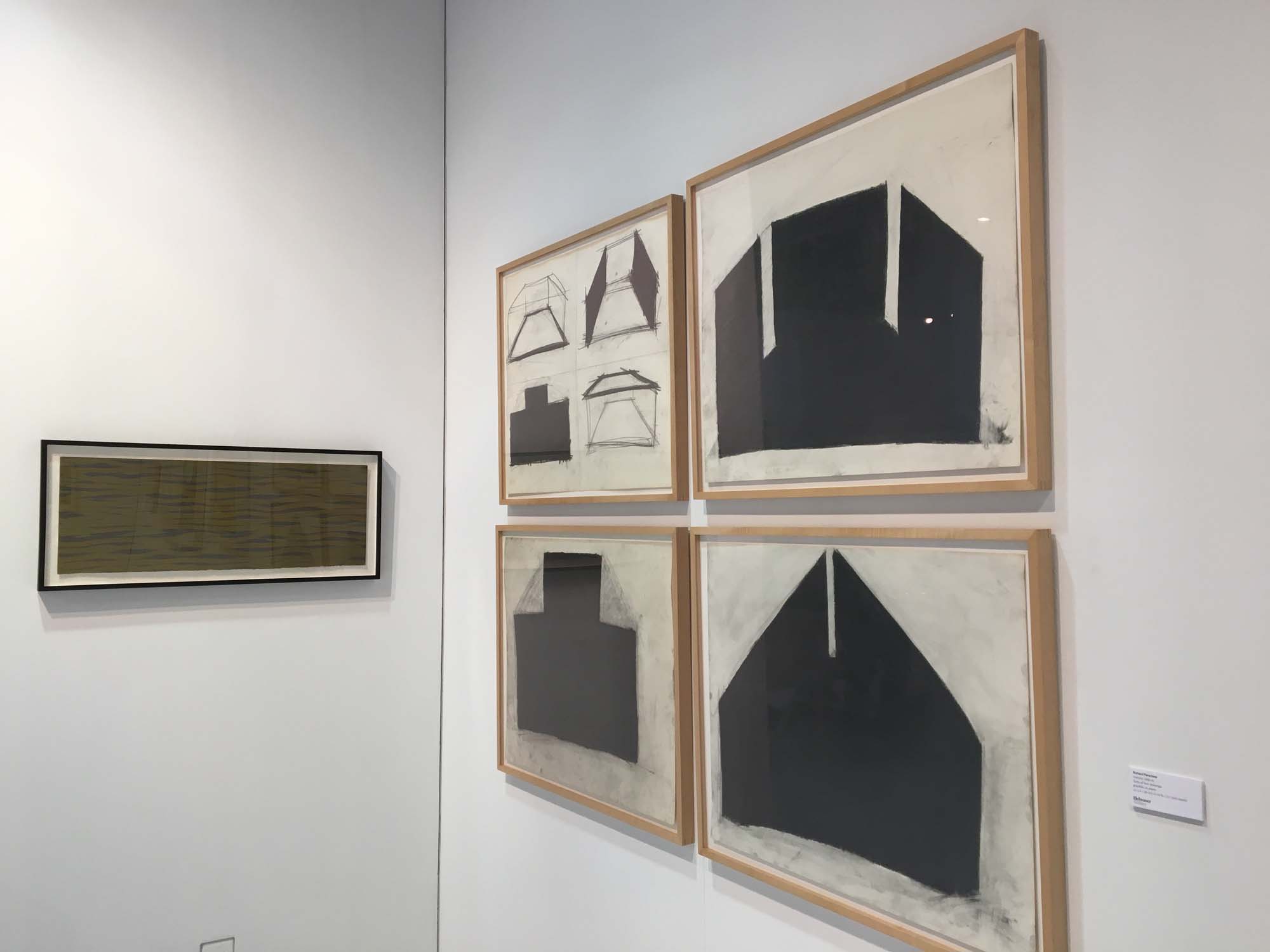
Richard Fleischner, Untitled,1980-81, Helwaser Gallery, New York
The transformation of the secondary market: 20th century classics contact with contemporary art in Perspectives
Anne-Marie Helwaser is a specialist in work of post-war masters. She founded Helwaser Gallery in Paris in 1989 and relocated it to New York in 2008. She has twenty years’ experience in the secondary art market. In an interview with Anne-Marie Helwaser, the Director of Helwaser Gallery in New York, she shared how she marched towards primary market.
CAFA ART INFO: How many times have you participated in the Armory Show? How do you see the art fair evolving?
Anne-Marie Helwaser: We've been with the Armory Show for four years. I notice that it is much more contemporary. So we were doing the secondary market of abstract expressionist art and pop art for 20 years. And last year our gallery opened a new branch focusing on contemporary art. Since then we started to do exhibitions for younger artists, I mean mid career artists. Five years ago, when you had a booth like this, you showed only secondary market art. And today, you can have this mix of both periods. It's very easy to mix an abstract expressionist with a contemporary artist. There is an opening. And I think it aligns with our interests in showing artists with historical significance, as we are now showing the ones who will be in the history books of the 21st century.
CAFA ART INFO: Why it has to be mid career artists? Have you ever considered showing emerging artists?
Anne-Marie Helwaser: No, it has to be mid career artists. We already have a long history of doing 20th century art. And when we select artists, the idea is to make sure their art will be a continuation of art history. If they're not American, we will only look at those that already have a strong institutional presence.
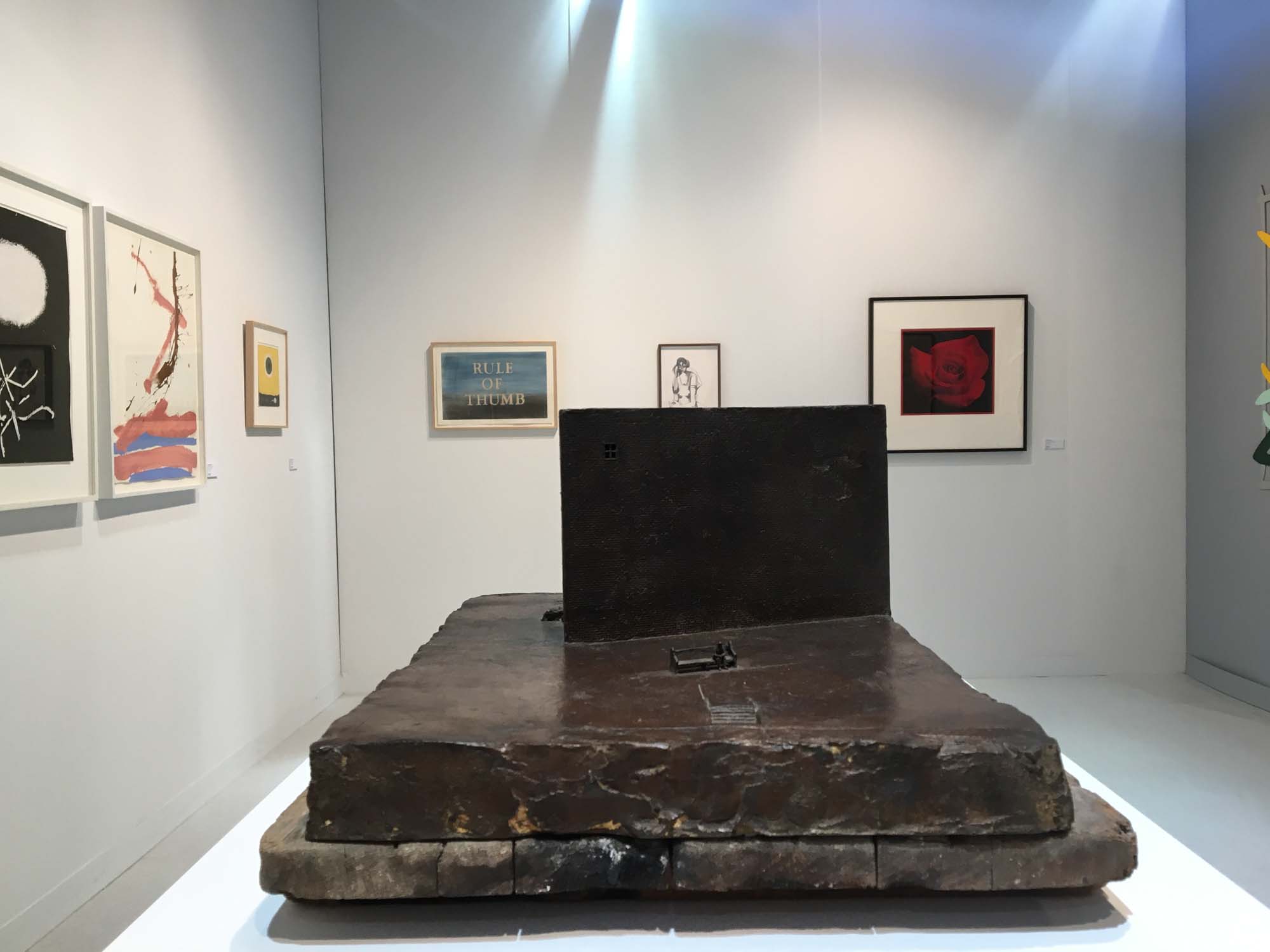
Richard Fleischner, Figure on Bench, 1967, Helwaser Gallery, New York
CAFA ART INFO: As you are looking beyond American art, are you interested in showing more artists from Asia?
Anne-Marie Helwaser: Yes, as I noticed the Armory Show includes more and more galleries from Asia in the last five year. I have been interacting with their gallery representatives, and it helps me to understand the art market in Asia. Currently, we are trying to collaborate with a gallery from (South) Korea.
So we said, we should bring our artists in America and show them in Korea. And you could bring your artists here. It's important to partner, but you also need to trust. So it's a long process.
CAFA ART INFO: Does the Armory Show organize certain gatherings or events for the exhibitors from different countries to mingle?
Anne-Marie Helwaser: No, you have to reach out on your own. As you can see, the section of the secondary market is located on Pier 90. It kind of limits the people who you can interact with. There is no Asian gallery on Pier 90. And also, there is no point for me to collaborate with the galleries around my booth who are also showing secondary market art. When I'm thinking about partnering, it's especially on the primary market. So I myself go to Pier 94, and talk to people.
Text and Photo by Peiyue Wu
Edited by Sue/CAFA ART INFO




























